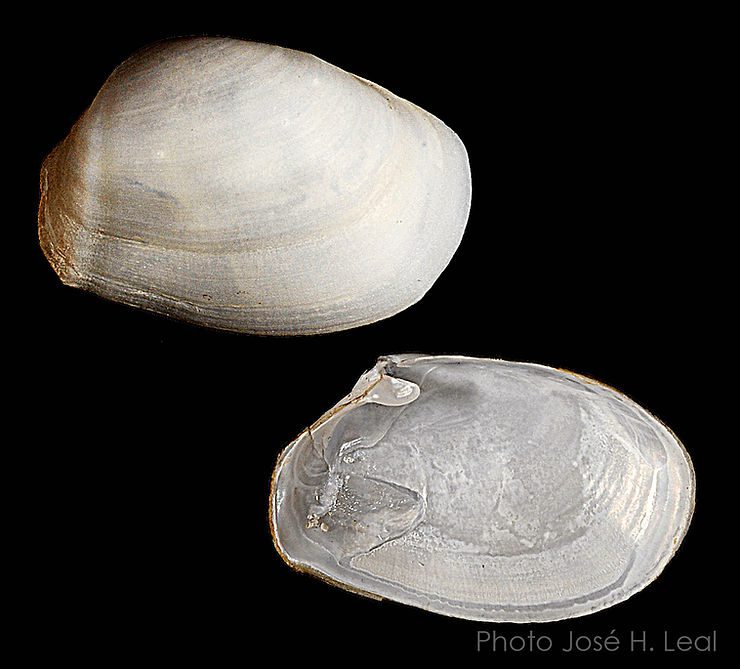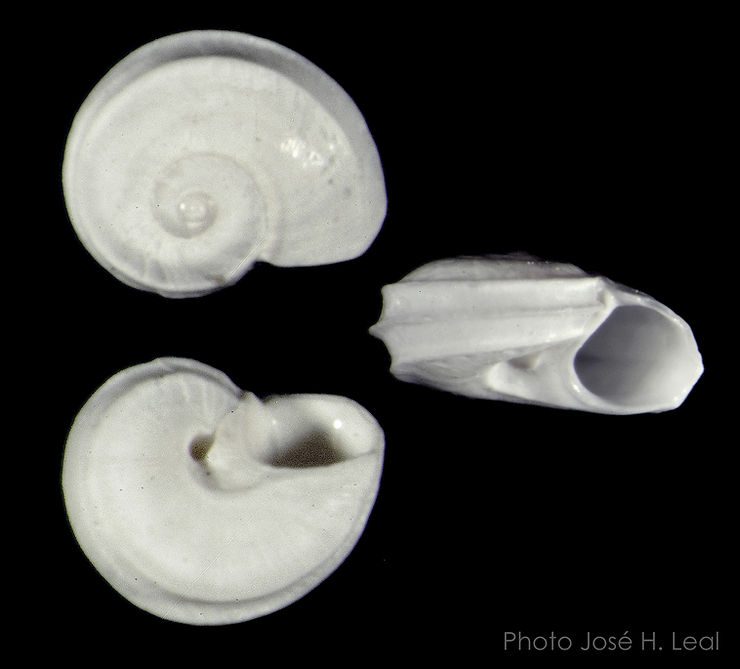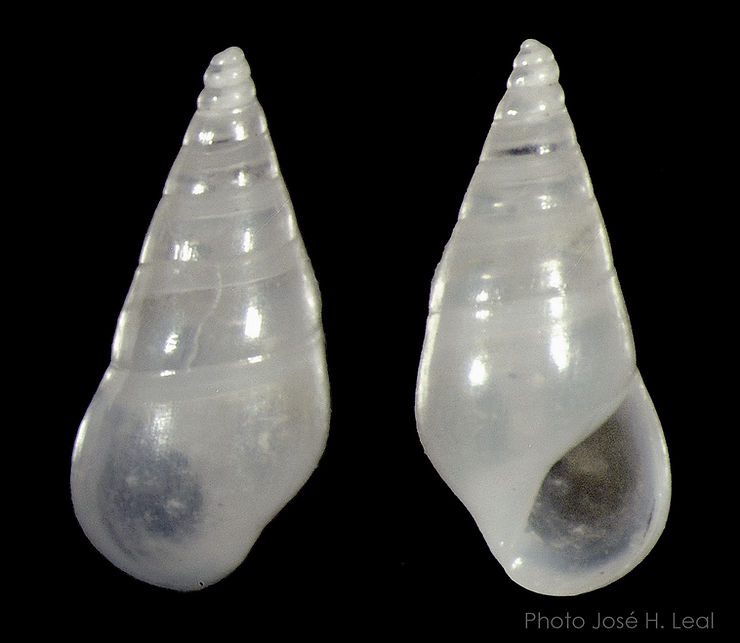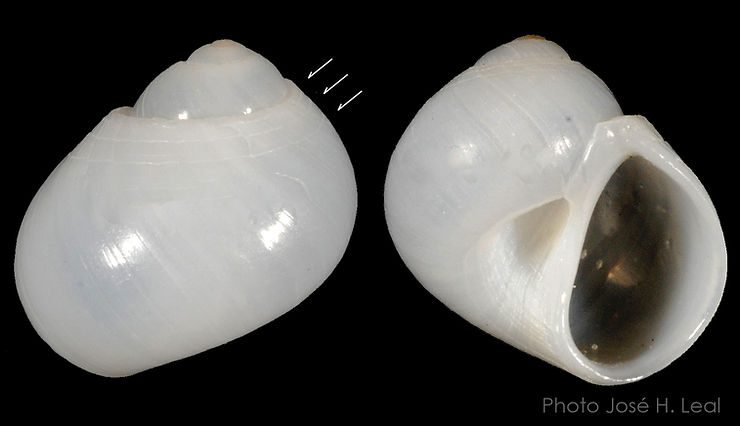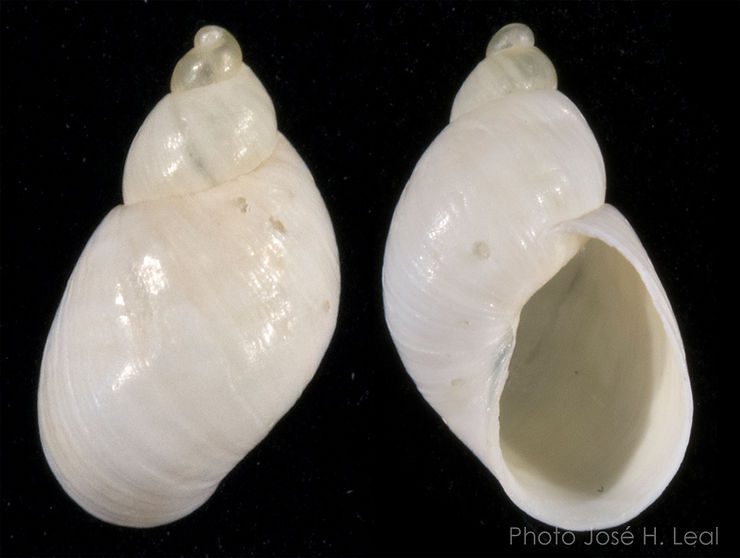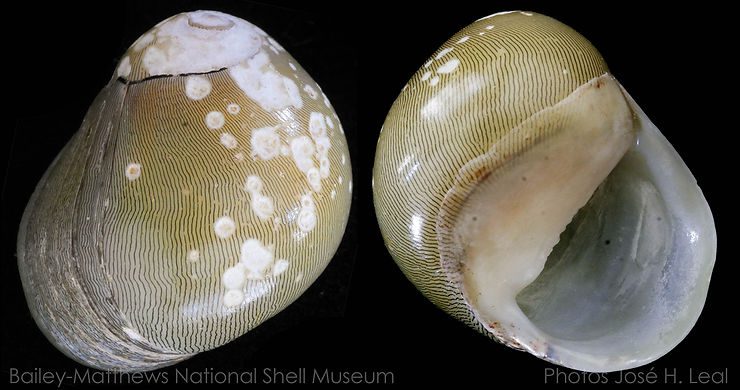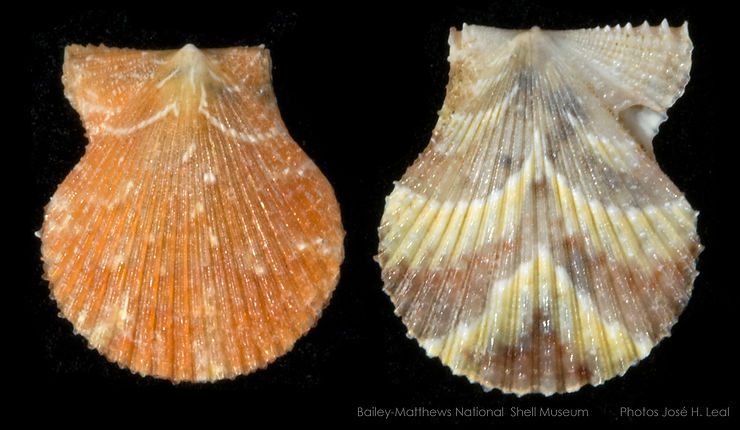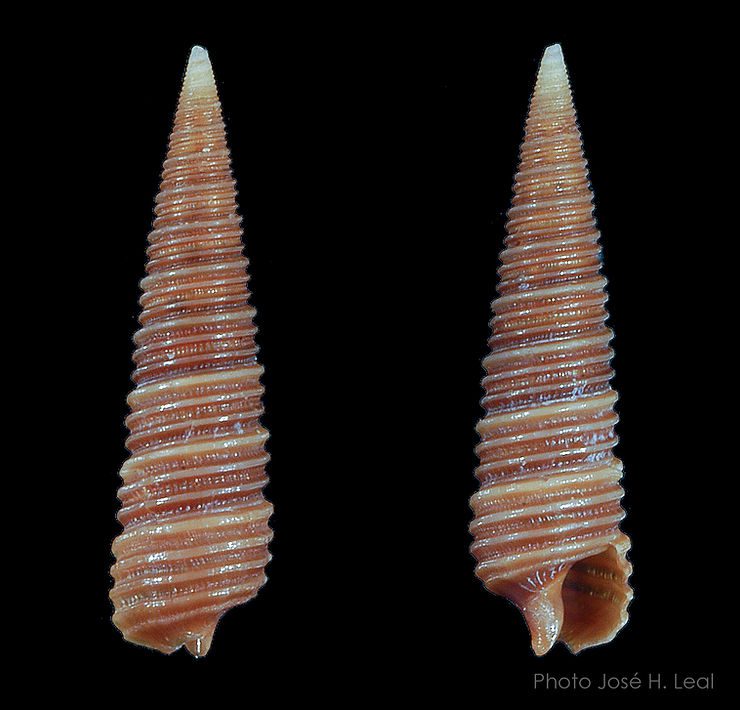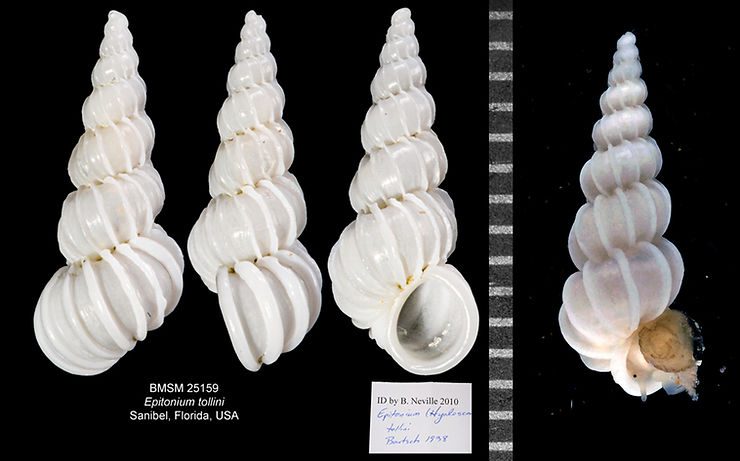
The Tollin Wentletrap
Tollin Wentletrap, Epitonium tollini Bartsch, 1938, is one of the less common among the eight recognized species of local Wentletraps. Measuring a tad more than 0.5 inch in size, it differs from the more common Angulate and Humphrey Wentletraps by its slender shape, with a more acute spire angle (the angle formed by the “sides” of the shell.) The costae (“blades”) that comprise the bulk of the shell sculpture line up nicely along successive shell whorls. The operculum (“trapdoor”) in this specie
